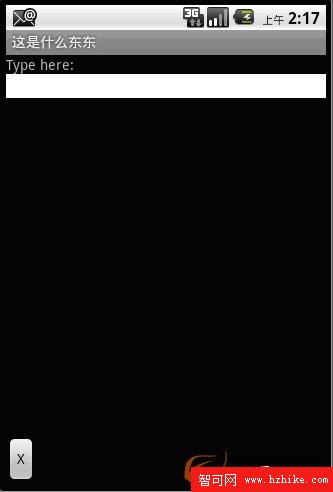編輯:初級開發
RelativeLayout關系布局:
在form中的用法:"@[+][package:]type:name" (@id/vIEwName)
在主題模式form中的用法: "?[package:][type:]name".(還沒見過相關的例子)
android:layout_above VS android:layout_below:
設定當前view和相關的view在垂直方向上的關系,above是上相關view的上面,below是在相關view的下面,above讓當前view的下面界和相關view的上邊界對齊。相反below則是將當前view和相關vIEw的上邊界對齊。
在form中的用法:"@[+][package:]type:name" (@id/vIEwName)
在主題模式form中的用法: "?[package:][type:]name".(還沒見過相關的例子)
android:layout_alignBaseline
大概相當於水平中心線對齊。
android:layout_alignBottom
android:layout_alignLeft
android:layout_alignRight
android:layout_alignTop
以上這些同理。
android:layout_alignParentBottom
android:layout_alignParentLeft
android:layout_alignParentRight
android:layout_alignParentTop
android:layout_centerHorizontal
android:layout_centerInParentc
android:layout_centerVertical
以上四項是指在父容器中的位置。
android:layout_alignWithParentIfMissing
If set to true, the parent will be used as the anchor when the anchorcannot be be found for layout_toLeftOf, layout_toRightOf, etc.
如果設為true,當找不到toLeftOf或toRightOf的vIEw的時候,父容器將成為錨點,以父容器做為布局的依據。
代碼
< RelativeLayout XMLns:android="http://schemas.android.com/apk/res/android"
android:orIEntation="vertical" android:layout_width="fill_parent"
android:layout_height="fill_parent">
< TextVIEw android:id="@+id/label" android:layout_width="fill_parent"
android:layout_height="wrap_content" android:text="Type here:" />
< EditText android:id="@+id/txt" android:layout_width="match_parent"

 Android本地化開發技巧
Android本地化開發技巧
很多開發者考慮使自己的Android程序兼容多國語言,其實Google在設計Android時已經考慮了本地化問題,通過定義相關的資源可以自適應當前手機的語言來加載響應的
 Android socket編程 以非阻塞I/O服務器及Service為例
Android socket編程 以非阻塞I/O服務器及Service為例
之前采用聊天敲門的方式來介紹Socket通信,有兩個不足的地方,1.服務器會造成IO的阻塞即服務器一旦執行server.accept();將一直處於阻塞狀態,直到有客戶
 Android GridView 網格布局 使用
Android GridView 網格布局 使用
GridVIEw[功能]以前提及過GridView 說也是一種AdapterView 和ListVIEw有點像 今天花了時間 用了一些 有點心得 和大家分享分享[思路]
 android 內存使用
android 內存使用
眾所周知,在寫 android 程序的時候,很容易出現 OOM ,而出現的時機大多數是由 Bitmap decode 引發的: &